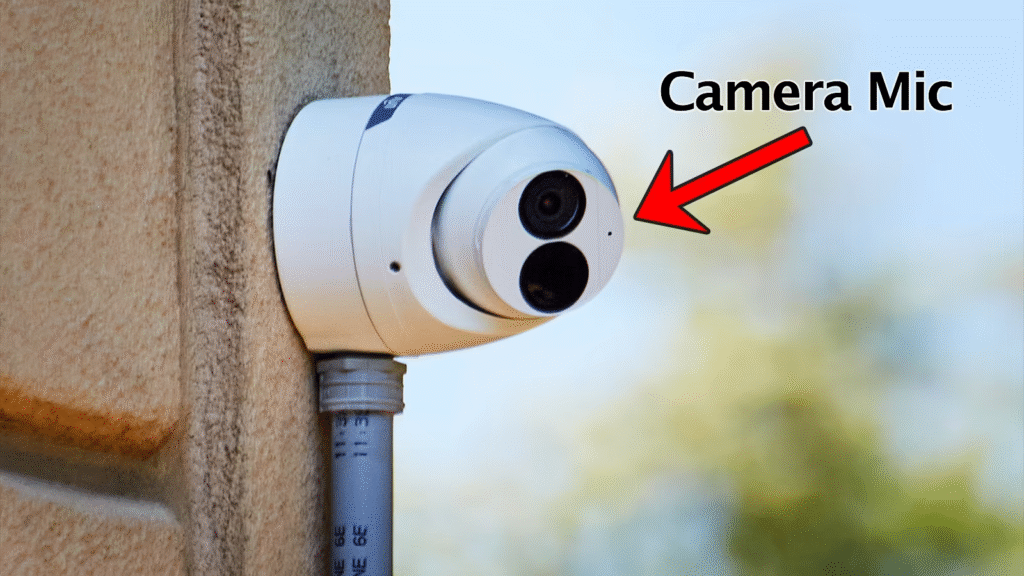Can CCTV Cameras Record Sound? Legal and Technical Aspects
CCTV cameras are widely used for enhancing security in homes, businesses, and public spaces. While most people are familiar with their ability to record video footage, a common question arises: Can CCTV cameras record sound? The short answer is yes, some CCTV systems can record audio, but both technical limitations and legal restrictions apply.
In this article, we will explore how audio recording works in CCTV systems, the laws governing its use, and the scenarios in which audio-enabled surveillance may or may not be appropriate.
How Do CCTV Cameras Record Sound?
Not all CCTV cameras are equipped to record sound. Audio recording in CCTV systems depends on two primary components:
1. Microphone Integration
CCTV systems can record sound if they have a built-in microphone or an external mic connected to the camera. High-end IP cameras often come with embedded audio functionality, while analog cameras typically require separate audio cabling and devices.

2. DVR/NVR Compatibility
Your DVR (Digital Video Recorder) or NVR (Network Video Recorder) must support audio input channels. Some DVRs only support one audio input, while NVRs handling IP cameras often allow multiple audio streams, depending on the model.

Types of CCTV Audio Configurations
There are two main ways audio is recorded in CCTV setups:
One-Way Audio:
This allows the camera to record sound from the environment, such as conversations, ambient noise, or activity. It’s the most common type in surveillance systems.
Two-Way Audio:
In this setup, you can communicate through the camera, using it like an intercom. This is especially useful for doorbell cameras or entry points where interaction is required.
Legal Aspects of CCTV Audio Recording
Is It Legal to Record Audio on CCTV?
The legality of recording sound varies by country and region, but in many places, audio surveillance is far more restricted than video recording.
General Legal Guidelines:
1. Consent Laws:
In jurisdictions with two-party or all-party consent laws, everyone being recorded must be informed and agree to the audio surveillance. Failing to do so can lead to serious legal consequences.
2. Expectation of Privacy:
It is generally illegal to record audio in places where people have a reasonable expectation of privacy, such as:
- Bathrooms
- Changing rooms
- Hotel rooms
- Private offices (without notice)
3. Public Notification:
In many regions, businesses must display clear signage indicating that both video and audio surveillance is in operation. This acts as a form of passive consent.

Examples of Legal Use-Cases
- Retail stores using audio surveillance at checkout counters for security or dispute resolution.
- Public transport hubs where security monitoring is mandated by government regulation.
- Homes with doorbell or baby monitoring cameras, where the homeowner has full control.
However, even in these cases, proper notice and adherence to laws is essential.
Where Audio Recording is Typically Restricted
- Workplaces: Employers cannot secretly record conversations between employees unless legal frameworks allow it and clear notice is given.
- Educational institutions: Audio recording of students or staff without permission is often prohibited.
- Healthcare facilities: Patient confidentiality laws usually ban any form of audio recording unless explicitly approved.
Benefits of Audio-Enabled CCTV Cameras
While there are legal hurdles, when used appropriately, audio can significantly enhance surveillance:
- Improved incident verification: Audio can confirm verbal threats, disputes, or unusual sounds.
- Better evidence: Police investigations often benefit from video with sound in criminal cases.
- Two-way interaction: Useful for managing visitors, deliveries, or warning intruders.
Technical Limitations of Audio Recording
Despite its benefits, audio in CCTV systems has some challenges:
- Sound quality: Low-quality microphones may pick up ambient noise but miss clear conversations.
- Range: Most CCTV microphones have a limited audio range, usually around 15–30 feet.
- Storage: Audio files require additional storage capacity alongside video recordings.
- Network bandwidth: In IP systems, audio streams increase the bandwidth demand.
Tips for Setting Up Audio-Enabled CCTV
- Check your DVR/NVR specifications for audio input support.
- Use high-quality microphones or choose IP cameras with built-in audio.
- Install in non-sensitive areas where privacy isn’t compromised.
- Always provide signage about audio monitoring.
- Consult local laws or legal counsel to stay compliant.
Conclusion
Yes, CCTV cameras can record sound, but it depends on the camera’s hardware and your system’s compatibility. More importantly, the use of audio in surveillance comes with strict legal considerations, especially concerning consent and privacy.
If you plan to use audio in your surveillance system, ensure you’re fully informed about local laws, always notify people clearly, and limit audio recording to situations where it is both necessary and legally justified.
Sound can be a powerful addition to your security toolkit—but only when used responsibly and ethically.
#CCTVCameras #AudioSurveillance #HomeSecurity #CCTVWithSound #SurveillanceLaws #SecuritySystems #PrivacyAndSecurity #CCTVSetup #SmartCameras #DVRNVR

Comments are closed.